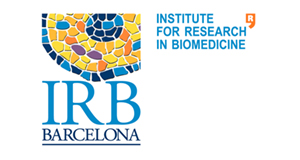Mass spectrometry and proteomics
Services
The services offered include MS, MS/MS and MSn analysis using atmospheric pressure ionisation techniques (electrospray and nanoelectrospray) coupled to LC, nanoLC or infusion inlets.
The Facility has the following lines of expertise:
Protein and Peptide Analysis
- Identification/characterisation
- Intact protein analysis
- High-throughput proteomics, PTM analysis
- Bottom-up proteomics
- Top-down proteomics, Middle-down proteomics
- mAbs analysis (ADC)
- Quantitative Proteomics
- Differential protein expression analysis
- Label-free strategies (DDA, DIA)
- Multiplexing strategies (iTRAQ, TMT SPS MS3, SILAC)
- Targeted analysis (PRM)
- Differential protein expression analysis
- Structural Proteomics
- Native MS, IM-MS, Non covalent interactions
- HDX-MS, Cross-linking MS, Limited proteolysis MS
- Affinity MS (SAW-MS)
Small Molecule Analysis
- Characterisation (on final products, exact mass and MS/MS)
Equipment
- Orbitrap Eclipse (Thermo Scientific) (NEW 2021)
The capacity of the Facility was significantly strengthened by the acquisition of a new generation tribrid mass spectrometer that includes a quadrupole, a linear ion trap, and an Orbitrap mass analyzer. This instrument allows multiple fragmentation techniques—CID, HCD, and ETD—during any stage of MSn, with subsequent mass analysis in either the ion trap or Orbitrap mass analyser.
The instrument takes advantage of the combination of a brighter ion source than previous Orbitrap instruments, with a higher capacity transfer tube and an electrodynamic ion funnel for increased sensitivity. It is provided with an advanced active ion beam guide for improved robustness, a segmented quadrupole, and improved ion transmission and ETD performance.
Advanced vacuum technology allows tuning of the vacuum in the IRM cell to improve ion transmission and S/N for intact proteins, as well as for their fragmentation.
This instrument is used in the most challenging applications in proteomics, both in Top-down and Bottom-up approaches. It is used coupled to two nanoLC systems depending on the MS approach: a Dionex Ultimate 3000 nanoLC sytem (Thermo) or a NanoAcquity UPLC from Waters. A chip-based nanoESI interface (Advion Triversa Nanomate) is used in both cases.
- Evosep One (New 2021)
The chromatograph Evosep One, which we use coupled to the Orbitrap Eclipse, is designed to be able to work with fast chromatographies and therefore provides real high-throughput and robust analysis, being ideal for clinical proteomic applications.
This nanoLC uses Evotips as disposable trap columns, where samples are loaded and desalted offline. The autosampler picks up the tip and integrates elution with liquid chromatography. This removes sample handling steps and reduces injection cycle overheads. Minimal wear and tear on mechanical components is ensured as all elution and gradient formation happen at low pressure. The Evotip is left for disposal after each run, which then allows partial elution to extend column lifetime. Analytically important peptides are effectively retained, and cross-contamination reduced.
The Evosep sytem facilitates the LC-MS/MS analysis of large number of samples to be able to undertake efficiently the analysis of sample cohorts in clinical and translational applications.
- Orbitrap Fusion Lumos (Thermo Scientific) (2016)
The capacity of the Facility was significantly strengthened by the acquisition in 2016 of this tribrid mass spectrometer that includes a quadrupole, a linear ion trap, and an Orbitrap mass analyzer. This instrument allows multiple fragmentation techniques—CID, HCD, and ETD—during any stage of MSn, with subsequent mass analysis in either the ion trap or Orbitrap mass analyser.
The instrument takes advantage of the combination of a brighter ion source than previous Orbitrap instruments, with a higher capacity transfer tube and an electrodynamic ion funnel for increased sensitivity. It is provided with an advanced active ion beam guide for improved robustness, a segmented quadrupole, and improved ion transmission and ETD performance.
Advanced vacuum technology allows tuning of the vacuum in the IRM cell to improve ion transmission and S/N for intact proteins, as well as for their fragmentation.
This instrument is used in the most challenging applications in proteomics, both in Top-down and Bottom-up approaches. It is used coupled to two nanoLC systems depending on the MS approach: a Dionex Ultimate 3000 nanoLC sytem (Thermo) or a NanoAcquity UPLC from Waters. A chip-based nanoESI interface (Advion Triversa Nanomate) is used in both cases.
- Synapt High Definition MS System (Waters-Micromass)
Synapt High Definition MS System (Waters-Micromass) (2007). Hybrid QTOF instrument with an incorporated Triwave Cell. This instrument allows tandem MS to be combined with ion mobility, thus permitting the analysis of samples differentiated not only by their mass to charge ratio, but also by their shape and size. The instrument is used to analyse the macromolecular structure and conformation of intact proteins and to study non-covalent interactions. When working in its normal configuration, the instrument is attached to a chip-based nanoESI interface (Advion Triversa Nanomate).
- Premier XE
LCT-Premier XE (Waters-Micromass) (2007). Orthogonal acceleration time-of-fight mass spectrometer ideal for the analysis of high molecular weight compounds. This instrument has been modified to achieve inert conditions inside the ionization source, in order to allow amide H/D exchange experiments for the study of the dynamic and structural properties of proteins and their complexes. In the standard set-up configuration it works coupled to an LC device (UPLC Acquity, Waters), e.g large protein analysis (mAbs).-
- Complementary devices
The Facility is equipped with the following complementary devices, in addition the chromatographic systems already mentioned:
A Gelfree (Gel-Eluted Liquid Fraction Entrapment Electrophoresis) system for protein separation: Gelfree 8100 Fractionation system (Protein Discovery Inc.) (2010)
Publications
Journal Of Medical Genetics
Scientific Reports
Journal Of Proteomics
Genome Medicine
Proteomes



